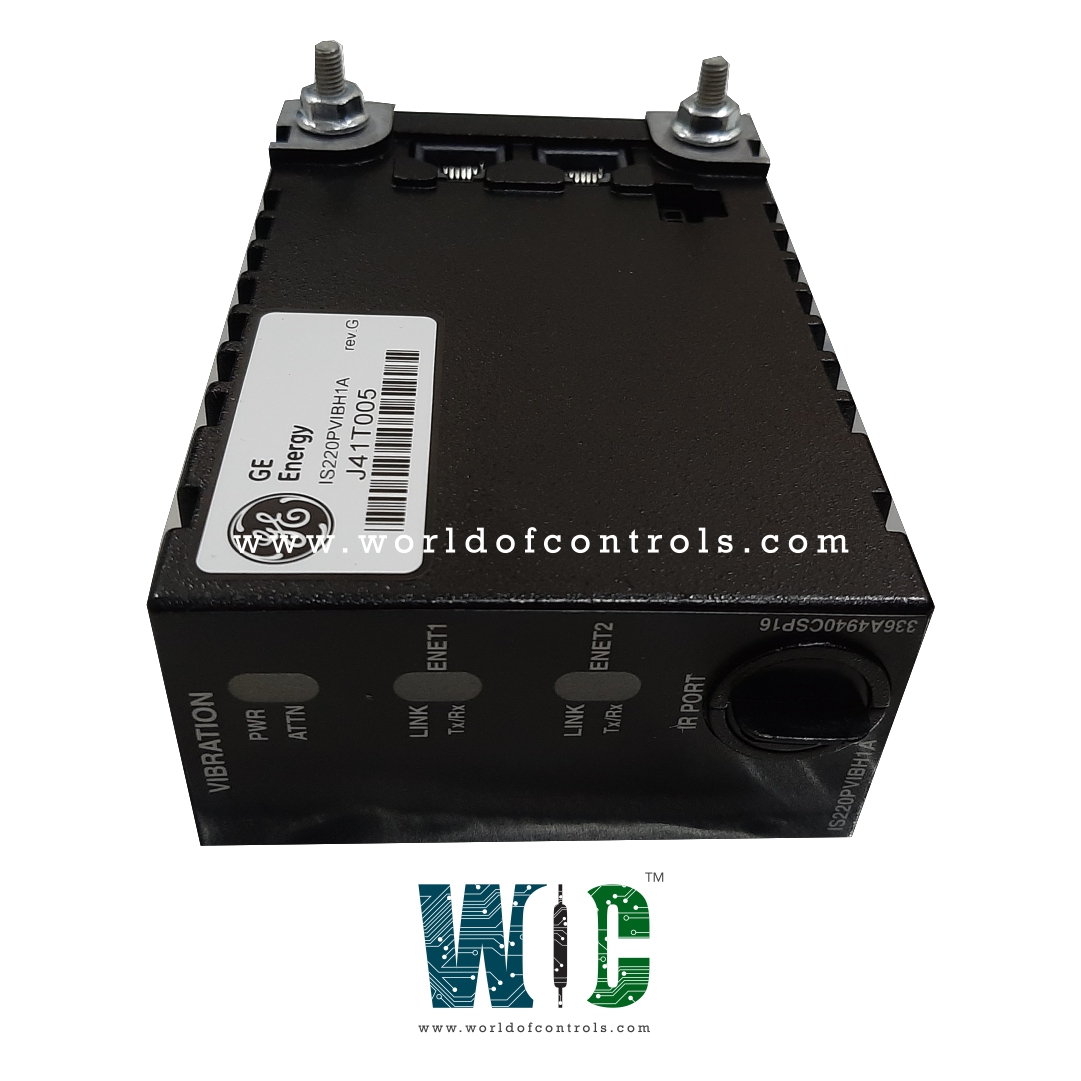
World Of Controls understands the criticality of your requirement and works towards reducing the lead time as much as possible.
IS220PVIBH1A, REV J - Vibration Monitor I/O Module is available in stock which ships the same day.
IS220PVIBH1A, REV J - Vibration Monitor I/O Module comes in UNUSED as well as REBUILT condition.
To avail our best deals for IS220PVIBH1A, REV J - Vibration Monitor I/O Module, contact us and we will get back to you within 24 hours.
SPECIFICATIONS:
Part Number: IS220PVIBH1A, REV J
Manufacturer: General Electric
Series: Mark VIe
Product Type: Vibration Monitor I/O Module
Ethernet Ports: 2 × 10/100 Mbps RJ45
A/D Channels: 16
A/D Sampling Rate: 80 kHz
A/D Resolution: 14-bit
Output Connector: DC-37 pin
Relative humidity: 5% to 95%, no-condensing
Power Requirements +32 V dc to 18 V dc
Microprocessor: Freescale Power pc (Power QUICC II PRO 667 MHz)
Memory: 256 MB DDR SDRAM
Operating System: QNX Neutrino
Weight: 2 lbs
Availability: In Stock
Country of Manufacturer: United States (USA)
Manual: GEH-6721G
FUNCTIONAL DESCRIPTION:
IS220PVIBH1A, REV J is a Vibration Monitor I/O Module manufactured and designed by General Electric as part of the Mark VIe Series used in GE Distributed Turbine Control Systems. The Vibration Monitor (PVIB) pack serves as the electrical interface between one or two I/O Ethernet networks and the TVBA vibration terminal board. It includes a processor board used across all Mark VIe distributed I/O packs, along with an acquisition board and a daughterboard.
Channels 1 to 8 can read data from various sensor types, including Proximitors, Velomitor, seismics, and accelerometers with integrated output (limited to Channels 1–3). Channels 9 to 12 support only Proximitors, while Channel 13 can accept either a Keyphasor signal or a proximity-type signal. The PVIB pack features dual RJ45 Ethernet ports and a 3-pin power input. It supports dual Ethernet networks for frame rates below 100 Hz, and single Ethernet networks for frame rates of 3.125, 6.25, 12.5, 25, 50, and 100 Hz. Data output is provided via a DC-37 pin connector, which links directly to the terminal board. Diagnostic features include indicator LEDs and an infrared port for local serial communications.
INSTALLATION:
OPERATION:
The processor application code contains all the logic necessary to allow the pack to operate from one or two Ethernet inputs. When operated from two Ethernet inputs, both network paths are active all the time. A failure of either network will not result in a shutdown of the I/O pack operation, and the failure will be indicated through the working network connection. This arrangement is more tolerant of faults than a classic hot-backup system, where the second port is only used after a primary port failure is detected. The Ethernet ports on the processor auto-negotiate between 10 MB/s and 100 MB/s speed, and between half-duplex and full-duplex operation.
An industry-standard infrared serial communications port is provided on the processor board. Accessible through the pack front, this port provides diagnostic information on the pack status and the ability to program the pack when both Ethernet connections fail. It is possible to communicate with this port using most notebook computers and most hand-held Personal Digital Assistants (PDA). The processor board in the pack is common to all Mark VIe Ethernet I/O packs. It contains the following:
VIBRATION MONITORING HARDWARE:
The analog processing board, KAPA, has the A/D conversion, the digital-to-analog (D/A) conversion, and the digital pre-processing for the PVIB. The A/D block has 16 channels, sampling at a frequency of 80 kHz with 14-bit A/Ds. The digital pre-processing is handled by a field-programmable gate array (FPGA). The FPGA reads the A/Ds, digitally filters the sampled signals, and the information is passed on to micro microprocessor memory. The FPGA also runs the high-frequency section of the tracking filter and the 1x and 2x functions. The tracking filter is used to determine the vibration content of a turbine caused by a given rotation speed. The 1x vibration is the peak-to-peak magnitude of the radial movement in sync with the turbine shaft speed. The 1x calculation also provides the phase relationship of the vibration phasor relative to the Keyphasor. The 2x calculation provides the radial vibration component that is at twice the speed of the shaft.
WOC has the largest stock of GE Distributed Control System Replacement Parts. We can also supply unused and rebuilt backup with a warranty. Our team of experts is available around the clock to support your OEM needs. Our team of experts at WOC is happy to assist you with any of your automation requirements. For pricing and availability on any parts and repairs, kindly contact our team by phone or email.
What types of sensors does the PVIB module support?
Channels 1–8 support Proximitor, Velomitor, seismic sensors, and accelerometers with integrated output (Channels 1–3). Channels 9–12 support only Proximitor sensors. Channel 13 is designed for Keyphasor or a proximity-type signal.
What distinguishes the PVIB from other vibration monitoring modules?
The PVIB module integrates high-speed sampling (80 kHz), intelligent sensor recognition, and onboard digital signal processing via FPGA, enabling real-time vibration diagnostics and protection-grade monitoring.
How does the PVIB ensure reliable network communication?
Dual Ethernet ports allow for network redundancy. If one connection fails, the other maintains communication, ensuring uninterrupted data flow between the module and the control system.